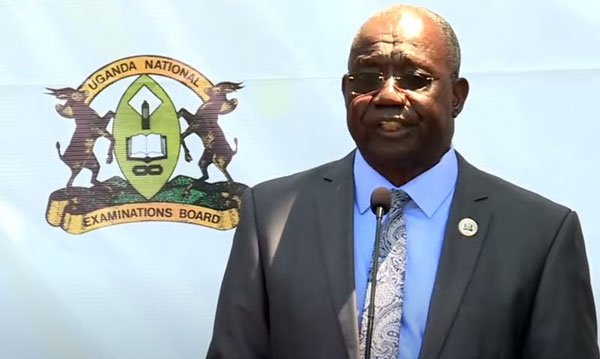
Kampala, Uganda | THE INDEPENDENT | A new National Assessment of Proficiency in Education (NAPE) report from the Uganda National Examinations Board (UNEB) has highlighted severe and persistent disparities in the country’s primary school system.
The report reveals a significant divide between learners in urban and rural areas, as well as between those attending private versus public schools. This stark inequality underscores the challenges faced by learners across different educational environments.
The assessment, which surveyed 70,430 learners in P.3 and P.6 from 1,770 schools—including 30 refugee schools and 8 schools for special needs—across 136 districts, focused on learners’ achievement and proficiency in numeracy and literacy in English.
For instance, for Primary Three (P3), the report shows that overall achievement in numeracy for learners stands at 57.5%, meaning that on average, three out of every five pupils are proficient in numeracy.
However, a pronounced urban-rural divide is evident with learners in urban areas achieving a proficiency rate of 74.3%, compared to just 48.5% for their rural counterparts. Similarly, P.3 learners in private schools exhibit a much higher proficiency rate of 86.5% in numeracy, while only 51.5% of learners in public schools reach proficiency.
A similar trend is observed among Primary Six (P6) pupils. The report reveals that 67.5% of learners in urban areas achieve proficiency in literacy in English, while only 26.2% of their rural counterparts attain the same level of proficiency. This means that over 20,510 of the 27,784 Primary Six learners, or 73.8%, which is more than 7 in every 10 pupils in rural schools, lack proficiency in this area.
The disparity between private and public schools is particularly stark at this level. While 73.2% of pupils in private schools are proficient in literacy, only 35.9% of pupils in public schools reach this standard. This data translates to the fact that over 6 out of 10 learners in public schools lack proficiency in literacy in English, while only 2 to 3 out of 10 pupils in private schools face similar challenges.
Amidst the glaring urban-rural and private-public school divides, the irony is that the largest number of learners are in rural areas, and the majority of them attend public schools. For example, among the P3 learners assessed, 28,235 (79.9%) studied from rural areas, with only 6,123 (17.3%) attending private schools, and the remaining 29,226 learners enrolled in public schools.
Kennedy Jumanyol, a UNEB research officer, highlighted that the growing trend of educational disparities is concerning, emphasizing that the quality of education should be consistent regardless of location. He pointed out that there is a clear problem that needs addressing in rural areas and public schools.
“Figures don’t lie. learners in private schools and those in urban areas appear to be significantly better off than their peers in public schools and rural areas. This ongoing divide underscores the need for targeted interventions to address these inequities and ensure more equitable educational opportunities for all learners,” Jumanyol stated.
He acknowledged that while further research might be needed to pinpoint the exact issues, several factors contributing to the disparity have already been identified. These include parents’ involvement, school feeding programs, the availability of teaching materials, and the competency of teachers.
This report adds to a growing body of evidence highlighting the divide between rural and urban, as well as private and public schools in Uganda’s education sector. Such disparities have been documented in several reports over the years, with the issue becoming increasingly evident during the recent COVID-19 pandemic. The pandemic exacerbated existing inequalities, revealing how learners in rural and public schools faced greater challenges in accessing quality education compared to their urban and private school counterparts.
Although the urban-rural and private-public divides are significant, the challenges faced by special needs learners and those in refugee areas are particularly severe. For example, among the 99 learners with hearing impairments assessed in Primary Six (P6), only close to 9 pupils (9.1%) were rated proficient in numeracy, and just 1% (which is statistically below one learner) achieved proficiency in literacy in English.
Visually impaired pupils performed somewhat better: 50% of 28 learners assessed in Primary Three (P3) were proficient in numeracy, and 46.4% of P6 learners were proficient in literacy in English. Despite these improvements, the proficiency levels for special needs learners remain notably low.
In refugee-hosting areas, only 19.5% of Primary Six (P6) learners were rated proficient in literacy in English, while just 29.6% of Primary Three (P3) learners in these areas achieved proficiency in the same subject.
“Intervention strategies should be designed to focus inclusion of learners with special education needs…future research should be conducted to establish the causes of low achievement levels of; learners who are deaf, girls in refugee hosting schools and p6 learners in literacy in English, and any other areas of interest of the researchers,” the 32 paged report recommended.
Comparing the current results with those from a similar study in 2018, the report showed that “there is no significant difference” in learners’ achievement. For instance, the proficiency rate in numeracy for P3 learners increased slightly from 55.2% to 57.5% while the proficiency in literacy in English for P6 learners declined slightly from 53% to 42.7%.
The report also observed that where similar questions were administered, the 2023 P3 and P6 learners found them to be simpler compared to learners in 2018, who had found them more challenging.
******
URN
 The Independent Uganda: You get the Truth we Pay the Price
The Independent Uganda: You get the Truth we Pay the Price



